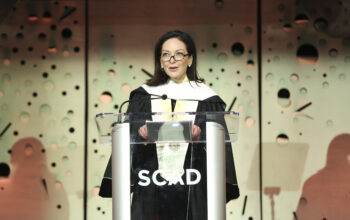In the vast landscape of academia, the profession of a mathematician often conjures a tapestry woven from conjectures, proofs, and the ethereal beauty of numbers. This intricate and multifaceted field not only captivates the intellect, but also offers intriguing financial prospects. Understanding the compensation received by mathematicians requires delving deep into the labyrinthine pathways of their work environments, specializations, and geographical variances.
To embark on this exploration, it is essential to consider the starting point of a mathematician’s earnings. The entry-level salary for those newly initiated into the field—often armed with a bachelor’s degree—can be likened to a modest seed planted in fertile soil. For instance, on average, these nascent scholars might expect compensation ranging from $50,000 to $70,000 per annum, depending on regional economic conditions and the specific sector in which they find employment. While this may seem paltry relative to other disciplines, it is vital to recognize that this initial remuneration is merely the first chapter in a potentially lucrative narrative.
As one ascends the academic hierarchy—be it through the attainment of a master’s or, more prominently, a doctoral degree—the figures can swell with remarkable potential. A master’s degree often unlocks doors to specialized roles in industry, where data science, actuarial science, and applied mathematics reign supreme. Here, mathematicians can command salaries that escalate to $80,000 to $100,000 or more. Ph.D. holders, those who have journeyed through the rigorous trials of research and dissertation, frequently step into roles that yield remuneration in excess of $100,000 per year, particularly in corporate settings, financial institutions, or esteemed research institutions.
Yet, salaries cannot be boiled down to mere numbers; they represent a confluence of various factors. The sector of employment plays a crucial role in determining earning potential. For instance, mathematicians engaged in public sector roles, such as education or governmental research, may find their compensation stagnating when juxtaposed against their private sector counterparts. Herein lies a compelling dichotomy: while the allure of academia offers intellectual fulfillment and a chance to mold future generations, it may not yield the same financial dividends as corporate or industry positions, particularly in technology, finance, or healthcare.
The burgeoning fields of data analytics and machine learning exemplify this trend, where the convergence of mathematics and technology creates opportunities for substantial financial gain. In such high-demand arenas, skilled mathematicians may find themselves not only adequately compensated but rewarded with bonuses and other incentives that can boost their annual earnings further. Those who demonstrate exceptional proficiency in these areas may even exceed the six-figure mark frequently within their first few years of employment.
Geography is another pivotal element influencing the financial tableau of a mathematician. Salaries can vary dramatically based on location. For example, metropolitan areas characterized by high demand for analytical skills—such as San Francisco, New York City, or Washington D.C.—often offer remuneration that eclipses the national average, reflecting the cost of living and competitive job market. In contrast, mathematicians in rural or less populated regions may encounter more modest salary figures, despite their expertise.
Moreover, a mathematician’s specialization can act as a double-edged sword, shaping both responsibilities and compensation. Fields such as cryptography or financial mathematics are often lauded for their lucrative prospects, given the critical nature of the work and the high-level expertise required. Conversely, those who engage in pure mathematics or theoretical studies may experience a different salary spectrum. Although their contributions are invaluable to the foundations of knowledge and innovation, they might not receive corresponding financial recognition due to the abstract nature of their work.
Furthermore, the overall economic environment and industry trends exert considerable influence on mathematicians’ compensation. Economic booms can precipitate heightened demand for analytical capabilities, resulting in increased salaries and abundant job opportunities. Conversely, during recessions, the market becomes more competitive, and salaries may stagnate or even decline as organizations tighten their budgets. Such oscillations serve as a reminder that a mathematician’s financial journey is often intertwined with broader economic currents.
It is also worth noting the importance of professional development and networking within the mathematical community. Continuous education and attendance at conferences can cultivate valuable relationships, potentially leading to career advancements and salary increases. Mathematicians who engage actively with industry professionals, contribute to collaborative research, and publish their findings can enhance their visibility and attractiveness to employers, thereby magnifying their earning potential.
In conclusion, while the financial prospects for mathematicians can be as varied as the disciplines they engage in, the profession promises an enticing journey filled with intellectual rewards. Whether one finds themselves charting pathways through complex equations or shaping data into meaningful insights, the earnings potential is substantial for those who navigate this intricate landscape wisely. With the right blend of education, specialization, and professional engagement, mathematicians can indeed transform their innate passion for numbers into a prosperous career marked by both financial and intellectual fulfillment.










